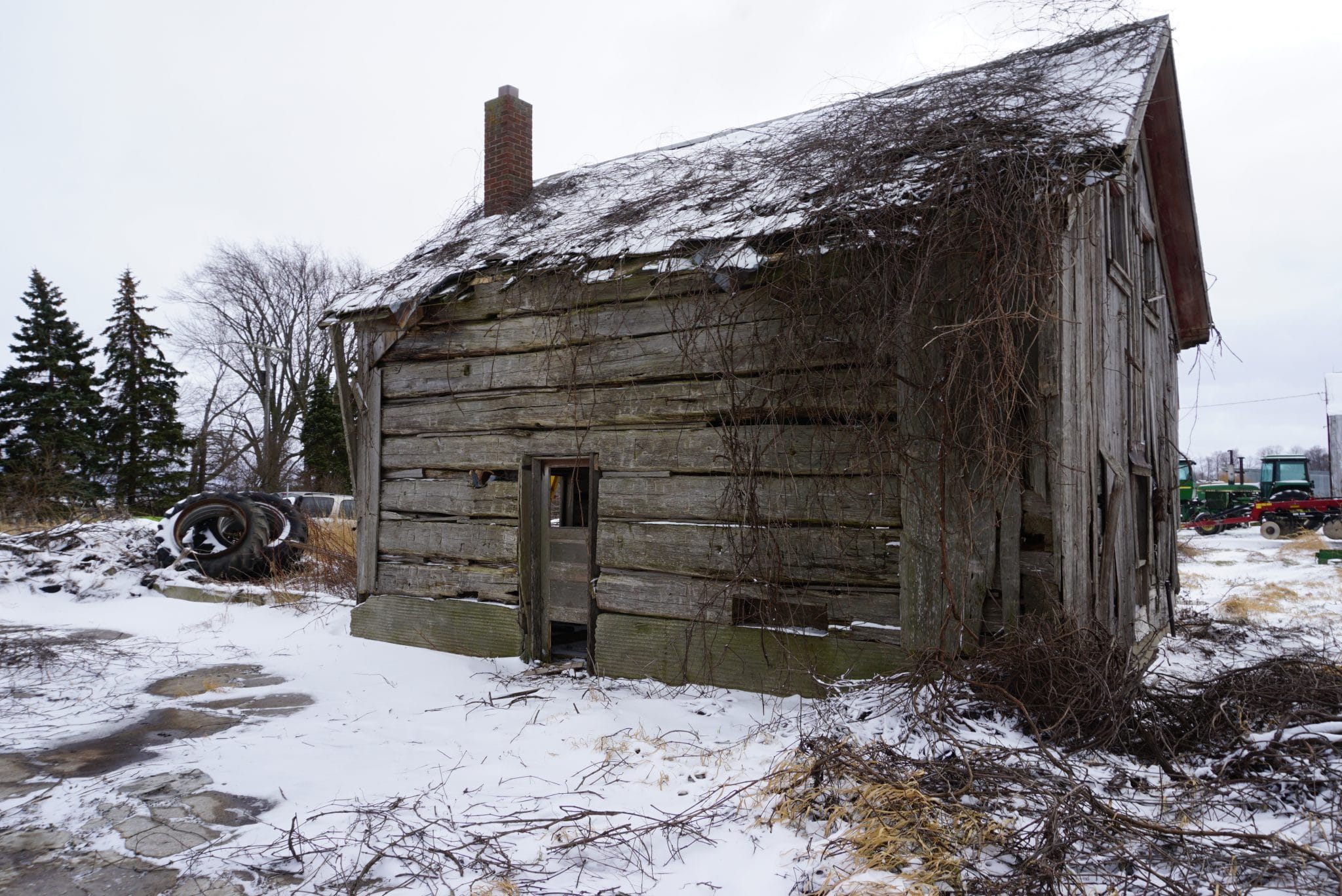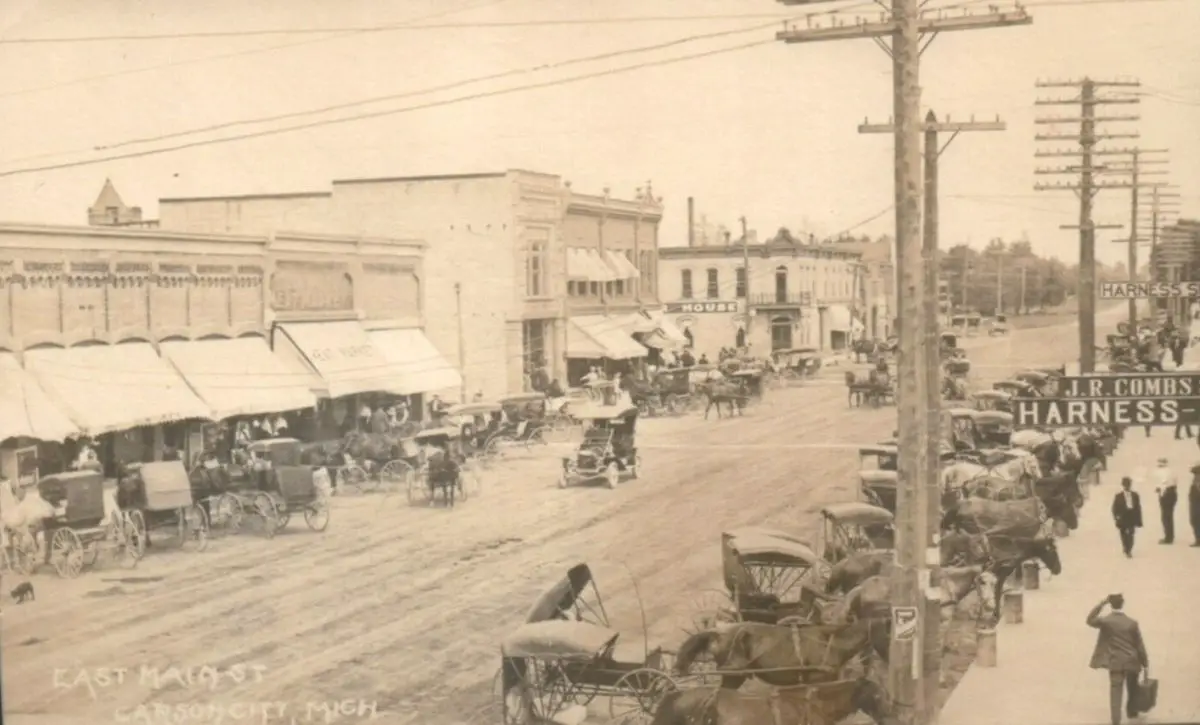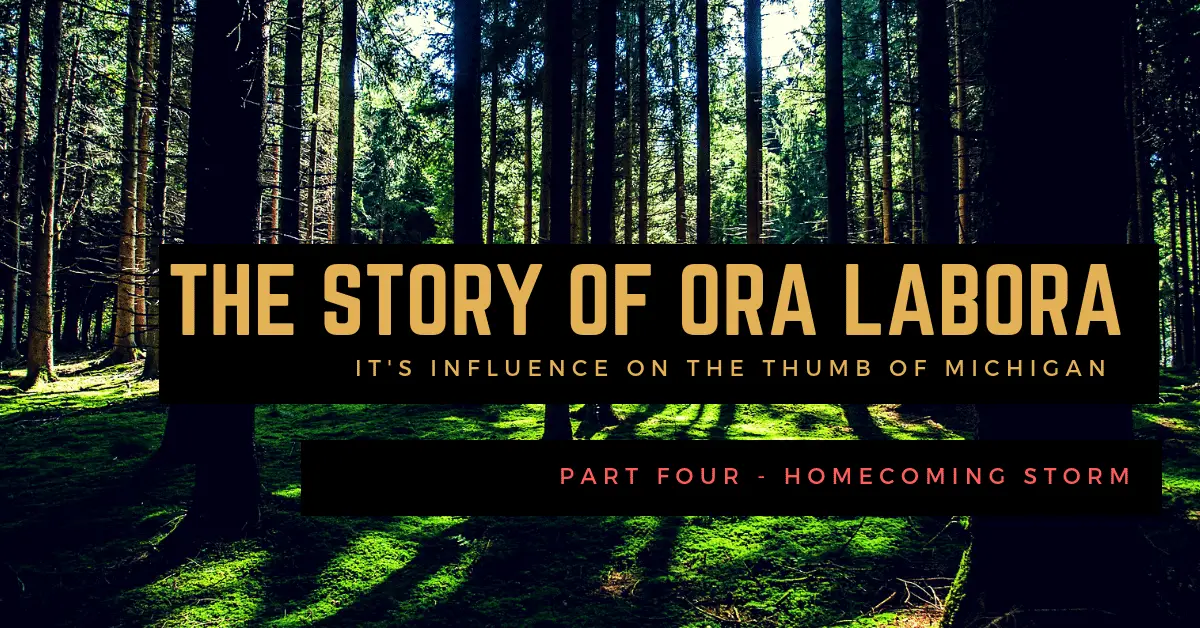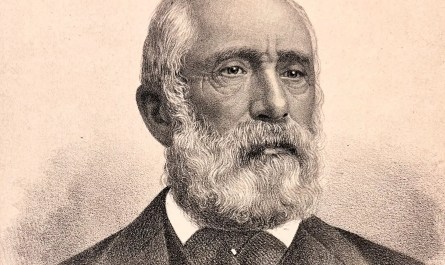Planning is underway by the Pigeon Historical Society to relocate and restore two cabins originally located in the Christian German Agricultural and Benevolent Society of Ora et Labora. In the 1800s German Methodist religious colony was founded by Emil Baur. Baur was sent by the elders of the famous utopian Harmony Society colony in Economy Pennsylvania to create a new settlement in northern Michigan. One Ora Labora cabin belongs to the Baur family and the other to the Notter family.
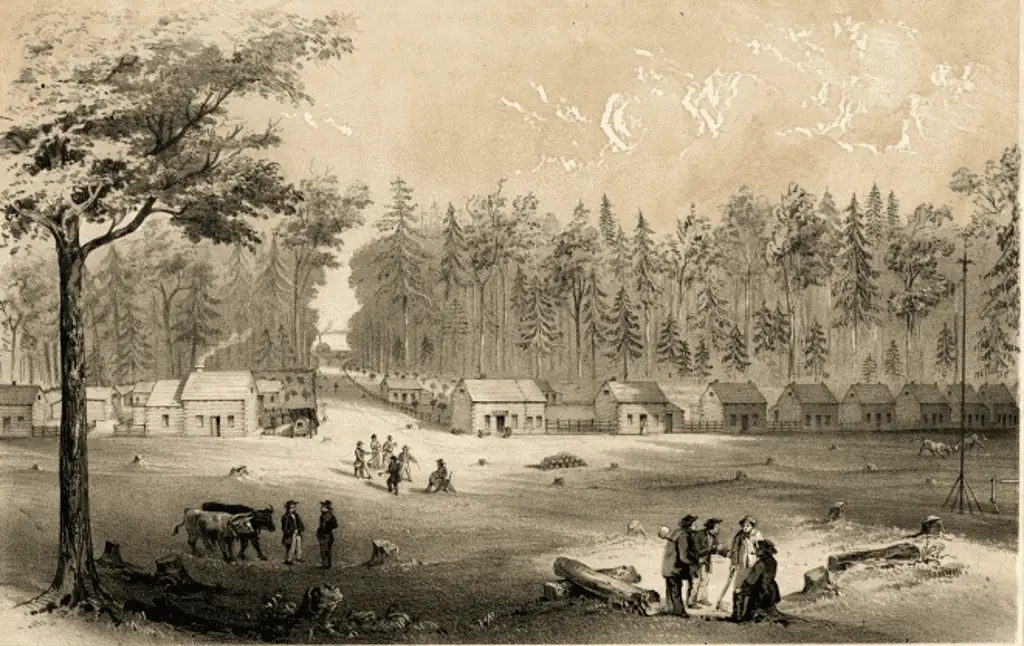
The Ora Labora colony was located near the tip of Michigan’s Thumb on Wild Fowl Bay just north of present-day Bay Port in McKinley Township. The community lasted from 1861 until 1871. At its height, the colony had over 288 German-speaking residents and about 75 buildings and structures. The town’s streets were neatly laid out and the rows of cabins bloomed with fruit trees and gardens.
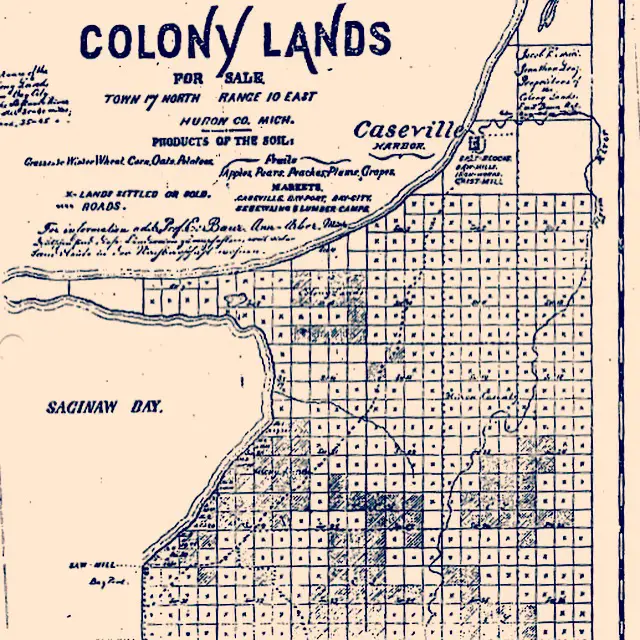
The town had a general store, church, post office, tannery, and gristmill. At the center was a community oven in the town’s Stadtplatz or town square. Besides farming, the colony’s primary industry was making telegraph poles, hewn lumber, and roofing shingles from its sawmill. When the Civil War broke out, men enlisted or were conscripted. The impact of the war taking the men into service shattered Ora Labora and it dissolved in 1871.
Ora Labora’s Cabins Hiding in Plain Sight
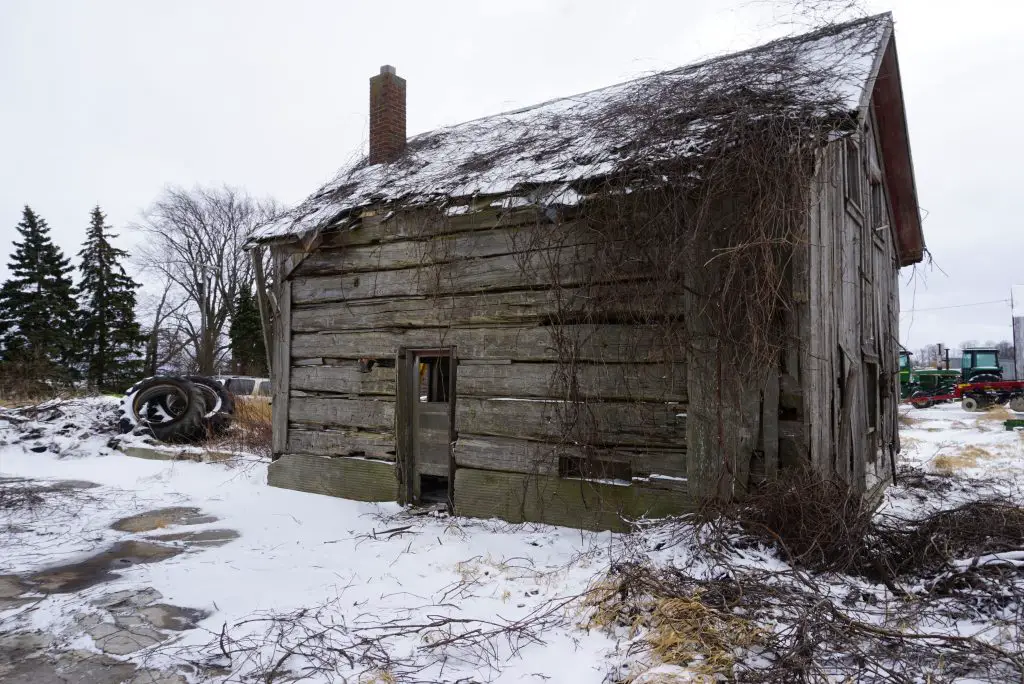
Most folks had thought that the colony’s cabins had rotted away or burned during the 1881 Great Fire that scorched the Thumb. It wasn’t until 1984 when a tornado ripped away a lean-to on a pig pen on Hulda Baur’s farm that a cabin was revealed. The cabin turned out to be the birthplace of Hulda’s husband, Paul Baur, grandson of Ora Labora’s founder Emil. The cabin was relocated to the family’s farm and used as a homestead until a more substantial brick farmhouse was constructed. Transferring and reusing buildings was a frequent and sustainable practice in the 1800s. The cabin was then used as a pig pen and for horse tack storage. A great deal of team harness collars, Martindale’s, and other tack is still in storage in the old cabin.
Cabins Still Sturdy After 150 Years
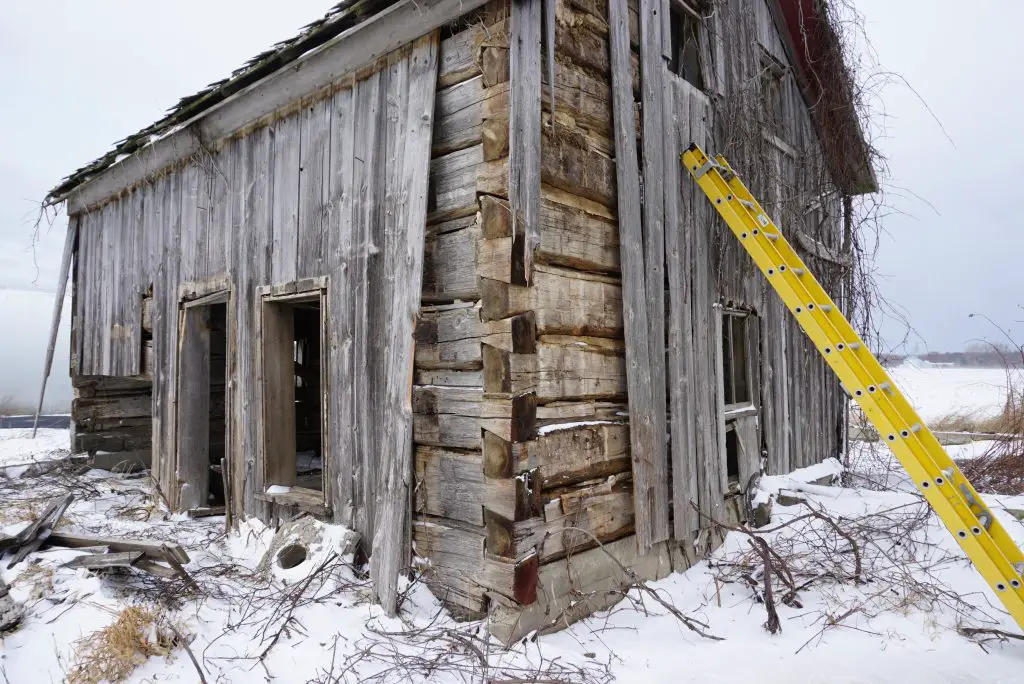
The Baur cabin consists of two stories with a great large room on the first floor and two smaller dormer rooms on the second floor. The timber used in the construction is over 12 inches high, and each end is joined using dovetailing. Apart from the cabin covered with wood siding, this joining method is likely the primary reason that these cabins have survived. The joints are designated as “self-draining” due to all outsides of the dovetail angle down and out. This thwarts any moisture from collecting and freezing in the joint. This method also has the effect of inter-locking of each log and prevents the two walls from pulling apart, shifting, or twisting away from the structure.
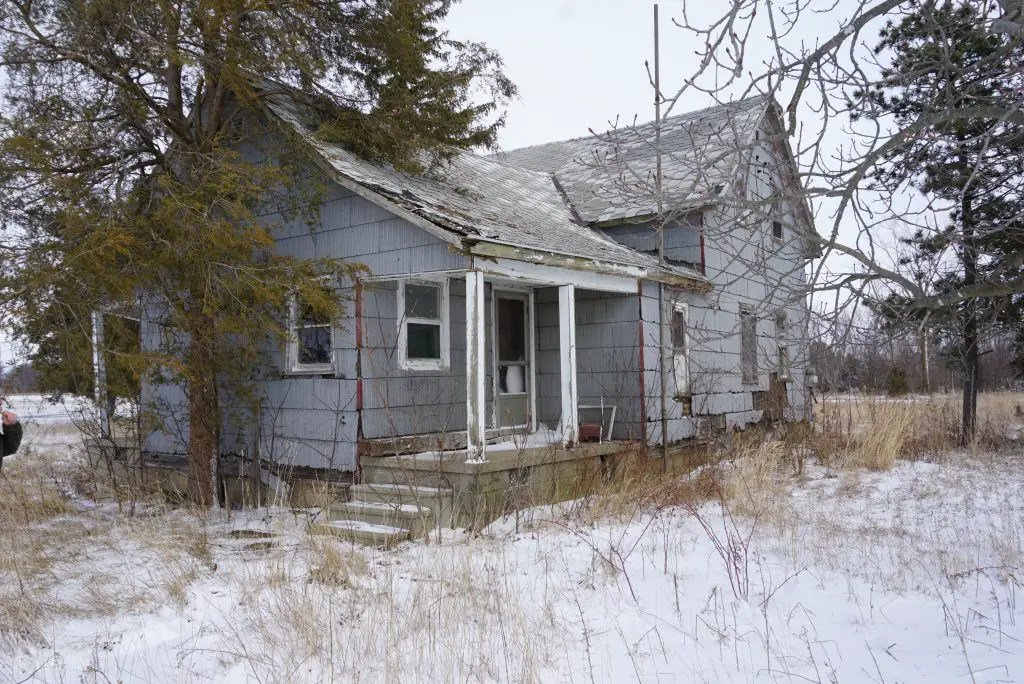
Several miles away is the Notter cabin. After its move from the colony, the family converted the two-story cabin into a house. A kitchen and front room were added to the original cabin structure. Since its exterior was totally encased with shingles and siding, it’s hoped that much of the cabin’s original timber is salvageable. Researcher Steven Schultz hopes that some of the original flooring and interior woodwork can be refinished and used in the restoration.
The Pigeon Historical Society is still in the planning stages of the cabin restoration project. A cabin restoration expert has surveyed the structures and deemed them salvageable. A donor has stepped up to help fund the project, and the group is determining a suitable location in which to move the log cabins. We hope to be able to report the group’s success in resurrecting this element of the old German colony in the coming year.
About the Pigeon Historical Society
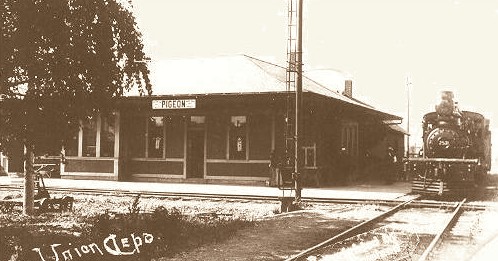
The Pigeon Historical Society is comprised of the Woelke Historical Research Center, Depot Museum, and Berne Junction Mercantile. Society endeavors to preserve, promote, and distribute the history of the Pigeon area. The Pigeon Historical Museum occupies the former Pigeon Depot which was built in 1908 as a joint venture of the Pontiac, Oxford, and Northern and the Pere Marquette Railroads. Today it contains over 2000 artifacts from past Pigeon businesses and the people who lived here. See the clothes they wore, the tools they worked with, and how their homes may have looked.
The Woelke Research Center is a “Library of Local History” based on the work of the late local historian Arthur Woelke. The collection is thousands of pages of documentation of local heritage all compiled in books of three-ring binders. The collection of scanned photos, including past businesses, local families, churches, schools, newspaper articles. This Historical Library is also the home repository of the newspaper of the Progress – Progress/ Advance dating back to 1897.
Berne Junction Mercantile is a unique gift shop of Michigan/Local Made Gifts made by local crafters and artisans.
Related Ora Labora Cabins And Michigan History Reading
- Michigan Historical Markers has a new website to explore and research.
- The Pioneer Log Cabins of Huron County Michigan
- Ora Labora – A Community Experiment on Wild Fowl Bay – Part One
- Ora Labora 1863 – A Lost Colony in Michigan’s North – Part Two
- Ora Labora Colony – A Lost Community in Michigan’s North – Part Three
- Ora Labora 1865 – The Struggle of Survival – Part Four
- Ora Labora – The Final Days of the Colony 1866 – Part Five

